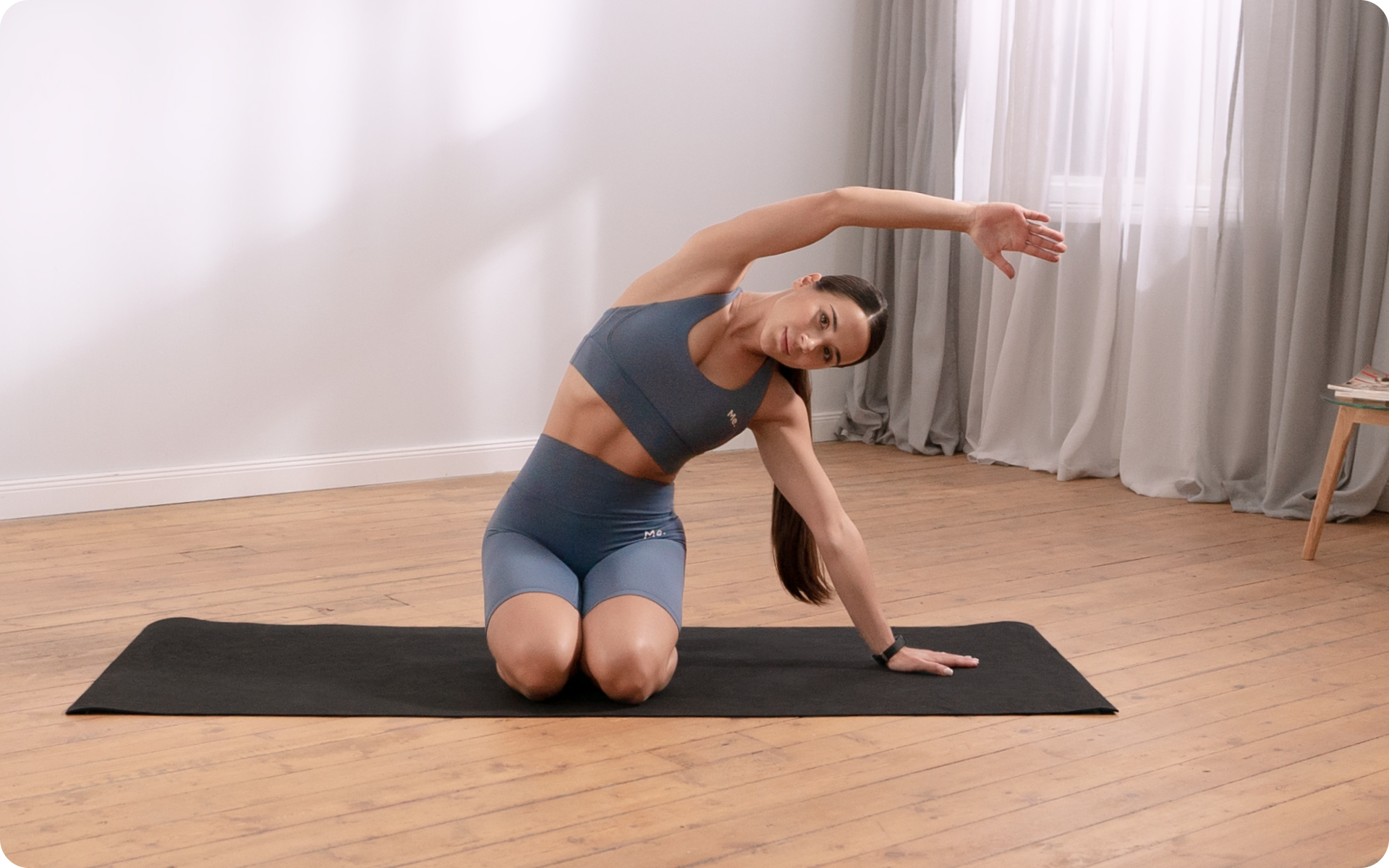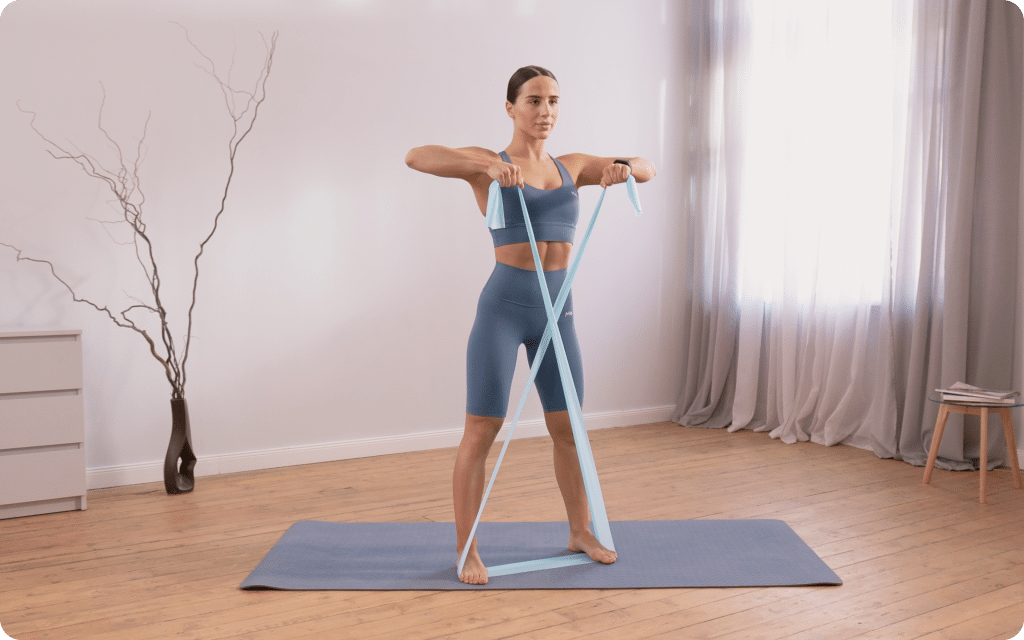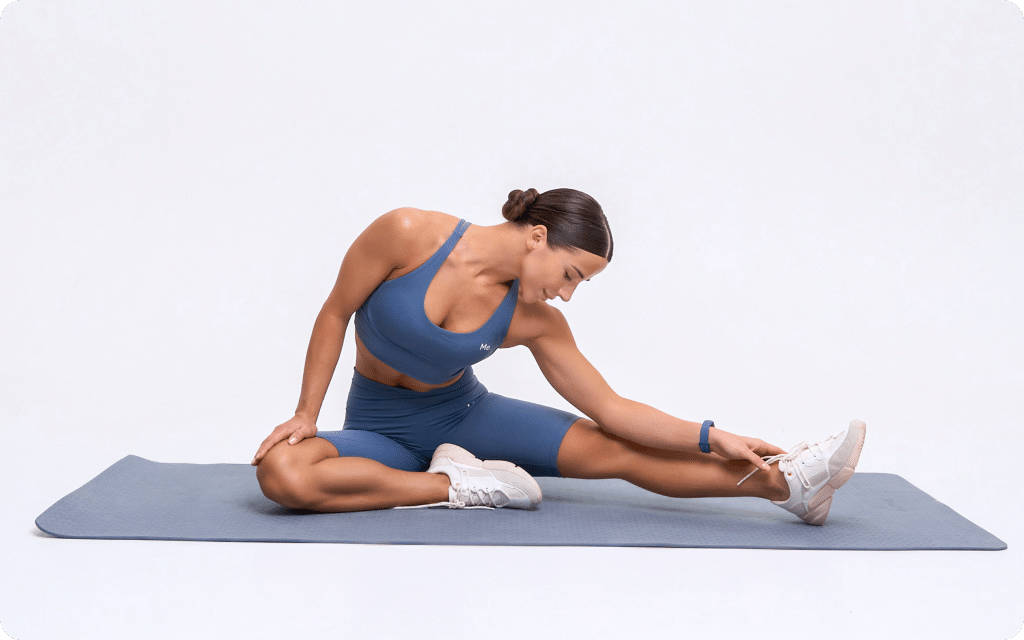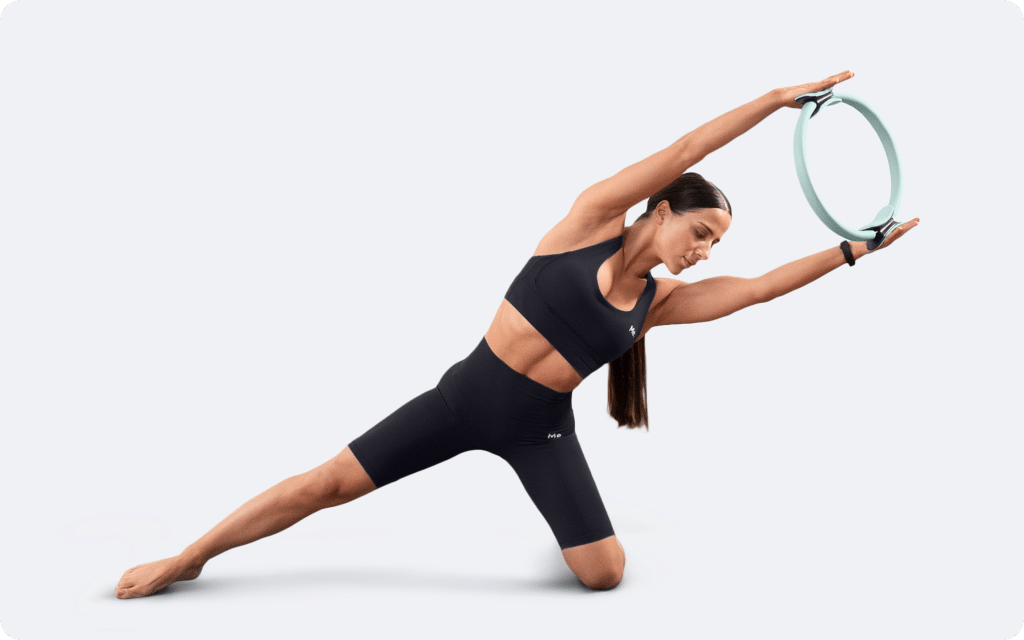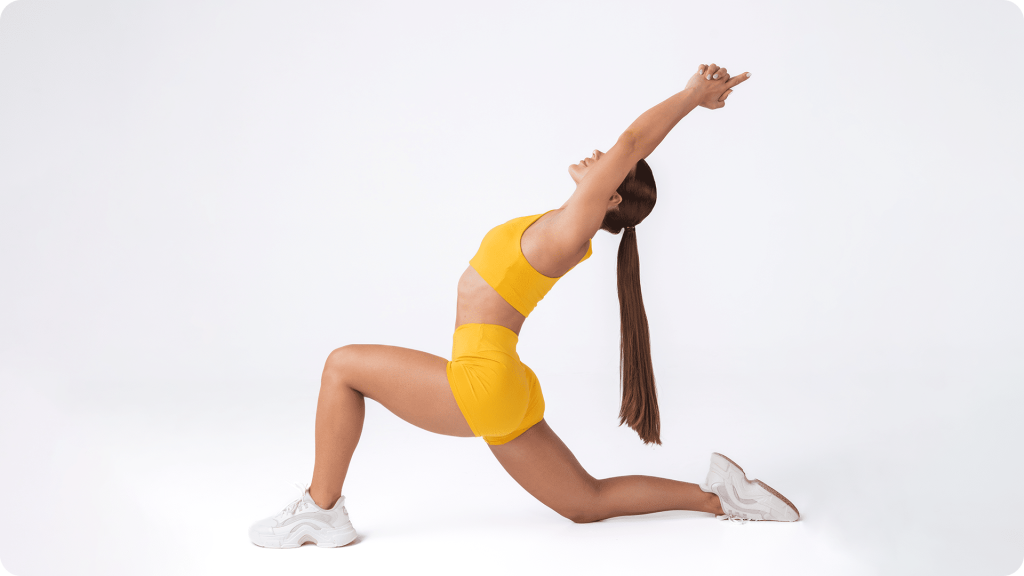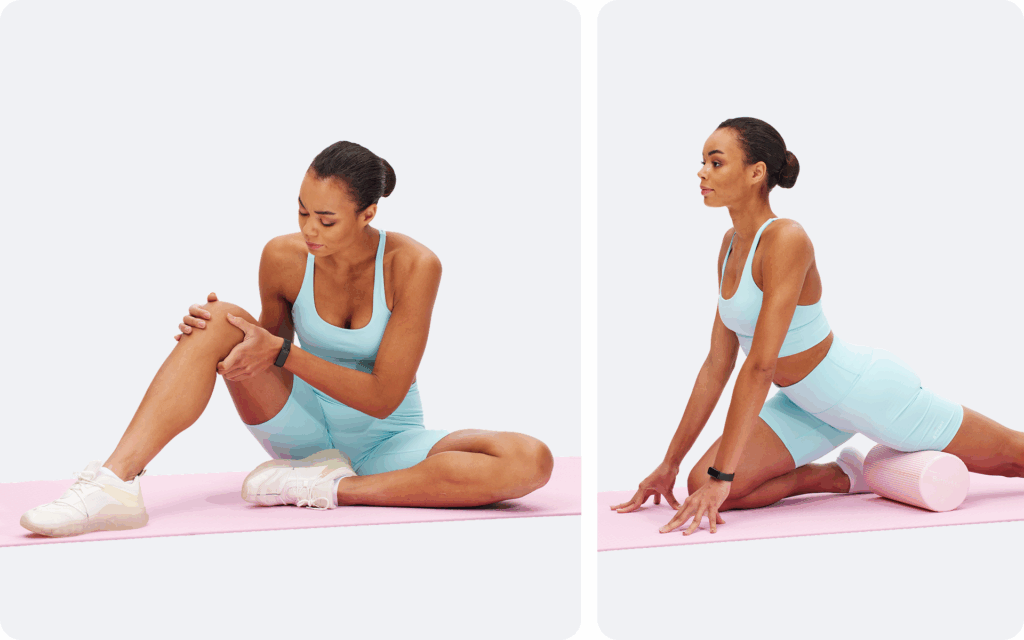A full-body stretching routine is one of the simplest but most effective ways to improve flexibility, boost circulation, and release muscle tension. Whether you’re an athlete, a fitness enthusiast, or you’re just starting your wellness journey, incorporating a well-structured stretching regimen can help prevent injuries and promote relaxation.
If you’re new to stretching, a full-body stretching routine for beginners is the perfect way to ease into this lifelong practice, focusing on gentle movements that target all major muscle groups in the body. In this article, we’ll look at the benefits of stretching and outline how best to stretch your full body.
What Is a Balanced Full-Body Stretching Routine?
A balanced full-body stretching routine is a comprehensive sequence of stretches designed to target all the major muscle groups – chest, back, shoulders, arms, legs, and core.
Unlike random stretches, a balanced routine ensures that you stretch all the major muscle groups and that opposing muscle groups receive equal attention.
These are muscles that work in opposition to each other to create movement:
- Biceps and triceps
- Chest and back
- Quadriceps and hamstrings
This helps prevent imbalances that often result in poor posture and discomfort.
Are you unsure how to create a full-body stretching routine at home? Check out our article on stretching techniques to learn which options are best suited for you.
Does Stretching Count As Exercise?
Yes, it does, but it’s not exercise in the sense of elevating your heart and improving cardio. However, it is exercise in the sense that it’s a form of activity that can provide other health and performance benefits.
Stretching, which is also referred to as flexibility, balance, or flexibility and balance activities, is a form of exercise that helps improve flexibility and mobility (i.e. the ability to fully move your joints).
Yoga, tai chi, and Pilates are some common examples of other low-impact stretching exercises you can do as part of your full-body stretching routine for flexibility (1, 2).
BetterMe: Health Coaching app helps you achieve your body goals with ease and efficiency by helping to choose proper meal plans and effective workouts. Start using our app and you will see good results in a short time.
What Are the Benefits of a Full-Body Stretch Routine?
Some key benefits of adding this exercise to your daily routine include
Reduced Risk of Injury During Exercise
There are many types of stretching exercises, but the two main types that are commonly used by fitness enthusiasts and beginners are:
- Dynamic stretching – This involves active movements that move a limb, joint, or muscle through its full length of motion. As these movements often mimic an exercise or sport, dynamic stretches are done before a workout
- Static stretching – This involves placing the joint in a position so that the muscles and connective tissues are stretched while held in a static position with the tissues at their greatest length. Static stretches are done at the end of a workout as part of the cool-down.
According to research, taking the time to do dynamic stretching as a warm-up helps you get mentally and physically ready for the upcoming workout as it:
- Improves blood flow and oxygen to the muscles
- Increases your heart rate
- Reduces the risk of injury
- Can increase your performance
On the other hand, doing static stretches as a cool-down after the workout may also reduce the risk of injury from potential muscle cramping and stiffness. It may even prevent fainting from the faster heart rate and higher body temperature that are caused by exercise (3, 4).
Improved Athletic Performance
Better athletic performance means that you become faster, stronger, have better balance, more muscular power, and are more agile. For athletes, better athletic performance means they get better at the sports they do.
Fitness enthusiasts can lift heavier or even run faster. And for the everyday person, athletic performance can positively influence daily activities, improving walking speed and the ability to lift heavier objects.
Research has shown that stretching, specifically dynamic stretching, can help improve athletic performance (5, 6).
Better Posture
Bad posture can lead to musculoskeletal discomfort and pain, particularly in the neck, lower back, and shoulders (7). It can even negatively affect your self-esteem, levels of arousal, mood, in addition to your stress and fear response (8).
Research on stretching for improved posture has shown that while stretching alone may not be sufficient to improve posture, an intervention that uses the combination of stretching and strength training can help those with posture problems and spinal deformities improve their condition (9, 10).
Improved Circulation
Proper circulation is the key to maintaining optimal health as it ensures efficient delivery of oxygen and nutrients to the body’s cells and tissues, while also removing waste products.
In an animal study published in The Journal of Physiology, researchers found that daily passive stretching helped improve muscle blood flow (11). This can help you perform the same exercises with less effort (12), which means it makes your muscles more efficient at what they do.
In a more recent study, researchers stated that yoga – a balance, flexibility, and strength training exercise – helps improve circulation, in addition to reducing blood pressure, enhancing heart function, reducing inflammation, and supporting endothelial health, all of which are factors that enhance cardiovascular health (13).
Improved Stress Management, Mental Health, and Sleep
According to multiple studies, stretching exercises have been shown to help boost serotonin levels in the body, enhance sleep quality, offer anxiety relief, enhance mood, promote calmness and relaxation, and improve depressive symptoms and mental toughness (14, 15, 16).
All of these factors make it easier for you to manage stress, improve your mental health, and improve your quality of sleep.
Read more: Somatic Flexibility Technique: Stretching to Release Tension and Build Self-Awareness
Why Do I Need A Full-Body Stretch?
A full-body stretch routine for males or females is important as it helps enhance flexibility and range of motion in your entire body, which in turn helps:
- Reduce the risk of injury
- Improve functional fitness and athletic performance
- Improve posture, particularly when combined with a strength training routine
- Improve circulation
- Improve mental health and sleep
How to Do a Full-Body Stretch Routine
When you perform a full-body stretch routine, you must adhere to the following:
- Ensure that you include at least one stretch for each major muscle in the body, from top to bottom. For example:
- Neck – Neck rolls, ear-to-shoulder stretch, or neck extensions
- Shoulders – Shoulder rolls, cross-body stretches, or thread the needle
- Triceps – Overhead triceps stretch or the triceps towel stretch
- Biceps – Arm circles and standing bicep stretches
- Forearms – Wrist rotations, wrist side bends, and wringing the towel stretch
- Chest – Camel pose, cobra pose, or the doorway stretch
- Back – Child’s pose, knee-to-chest, cat-cow pose, or seated spinal twist
- Hips – Hip rotations, leg swings, or the 90/90 hip rotation
- Hamstrings – Standing hamstring stretch, hamstring sweeps, or alternating high kicks – all of these should be done on both legs
- Quadriceps – Lunges, standing, kneeling, and side-lying quad stretch
- Calves – Calf raises
- Ankles – Ankle rolls
- Just one stretch for each of the above-mentioned body parts/muscles will help you complete a balanced full-body stretching routine.
- If a particular muscle or body part feels particularly stiff, hold the specific stretch for that area for longer or perform two exercises for the area instead of one.
When it comes to weight loss, progress is made by inches, not miles, so it’s much harder to track and a lot easier to give up. The BetterMe: Health Coaching app is your personal trainer, nutritionist, and support system all in one. Start using our app to stay on track and hold yourself accountable!
Is It Good to Do a Full-Body Stretch Every Day?
Yes, you can do a full-body stretching routine daily. Generally, people are encouraged to stretch their bodies at least two or three times a week, but experts state that daily stretching is preferable (17).
Read more: This Stretching Calisthenics Routine Will Have You Loose and Limber for Your Next Workout
How Long Does It Take to Stretch the Whole Body?
This is largely dependent on the number of stretches performed and how long each stretch is held. A quick full-body stretch routine, e.g. a warm-up before a workout, can take as little as 5-10 minutes. However, some routines can take up to 20 or 30 minutes.
What Happens If You Stretch Every Day for a Month?
You’ll become noticeably more flexible and your range of motion will increase. You may also note that your posture has improved, your athletic performance is better, and that you’re not as prone to injury or muscle stiffness as you were before you started stretching.
Neither option is necessarily better than the other; what matters is that you’re setting aside some time each day to stretch. Simply pick the option that works best with your lifestyle and schedule. If you think your schedule may be better for night stretching, here are some benefits of stretching before bed that could help you stick to this routine. You can do full-body stretches two or three times a week, but ideally, you should do them daily. Yes, it is. Even 10 minutes is enough, as long as you’re hitting the major muscles in your body and holding each stretch for at least 30 seconds. Yes, it’s OK to stretch in bed, which is perfect for those who want to stretch before they fall asleep or those who prefer to do it first thing in the morning.Frequently Asked Questions
Is it better to stretch in the morning or at night?
How many times a week should I do a full-body stretch?
Is 30 minutes of stretching enough?
Is it OK to stretch in bed?
The Bottom Line
A full-body stretching routine is the ideal program to add to your daily schedule. Just 5 to 10 minutes of this can significantly improve your functional fitness, athletic performance, and general quality of life. Remember, all you need to do is cover all the major muscles in your body and you’re good to go!
DISCLAIMER:
This article is intended for general informational purposes only and does not serve to address individual circumstances. It is not a substitute for professional advice or help and should not be relied on for making any kind of decision-making. Any action taken as a direct or indirect result of the information in this article is entirely at your own risk and is your sole responsibility.
BetterMe, its content staff, and its medical advisors accept no responsibility for inaccuracies, errors, misstatements, inconsistencies, or omissions and specifically disclaim any liability, loss or risk, personal, professional or otherwise, which may be incurred as a consequence, directly or indirectly, of the use and/or application of any content.
You should always seek the advice of your physician or other qualified health provider with any questions you may have regarding a medical condition or your specific situation. Never disregard professional medical advice or delay seeking it because of BetterMe content. If you suspect or think you may have a medical emergency, call your doctor.
SOURCES:
- Physical Activity and Your Heart (2022, nhlbi.nih.gov)
- Three Types of Exercise Can Improve Your Health and Physical Ability (2025, nia.nih.gov)
- Warm up and cool down activities (2024, nhsinform.scot)
- Warm Up, Cool Down (2024, heart.org)
- Acute Effects of Dynamic Stretching on Muscle Flexibility and Performance: An Analysis of the Current Literature (2018, pubmed.ncbi.nlm.nih.gov)
- Dynamic Warm-ups Play Pivotal Role in Athletic Performance and Injury Prevention (2025, sciencedirect.com)
- The prevalence of bad posture and musculoskeletal symptoms originating from the use of gadgets as an impact of the work from home program of the university community (2022, pmc.ncbi.nlm.nih.gov)
- Do slumped and upright postures affect stress responses? A randomized trial (2015,
- EFFECTIVENESS OF STRETCHING AND STRENGTHENING EXERCISES ON STOOPED POSTURE IN GERIATRIC PATIENTS (2024, researchgate.net)
- Effectiveness of Combined Stretching and Strengthening Exercise Using Rehabilitation Exercise System with a Linear Actuator and MR Damper on Static and Dynamic Sitting Postural Balance: A Feasibility Study (2021, mdpi.com)
- Daily muscle stretching enhances blood flow, endothelial function, capillarity, vascular volume and connectivity in aged skeletal muscle (2018, pubmed.ncbi.nlm.nih.gov)
- Increasing blood flow to exercising muscle attenuates systemic cardiovascular responses during dynamic exercise in humans (2015, pmc.ncbi.nlm.nih.gov)
- Enhancing Cardiovascular Health: The Positive Impact of Yoga on Blood Flow and Circulation (2024, researchgate.net)
- An examination of serotonin and psychological variables in the relationship between exercise and mental health (2011, onlinelibrary.wiley.com)
- Aerobic exercise or stretching as add-on to inpatient treatment of depression: Similar antidepressant effects on depressive symptoms and larger effects on working memory for aerobic exercise alone (2020, sciencedirect.com)
- A scoping review of the effect of chronic stretch training on sleep quality in people with sleep disorders (2024, link.springer.com)
- How much and how often should people stretch? Experts say there’s no one answer. (2024, heart.org)
